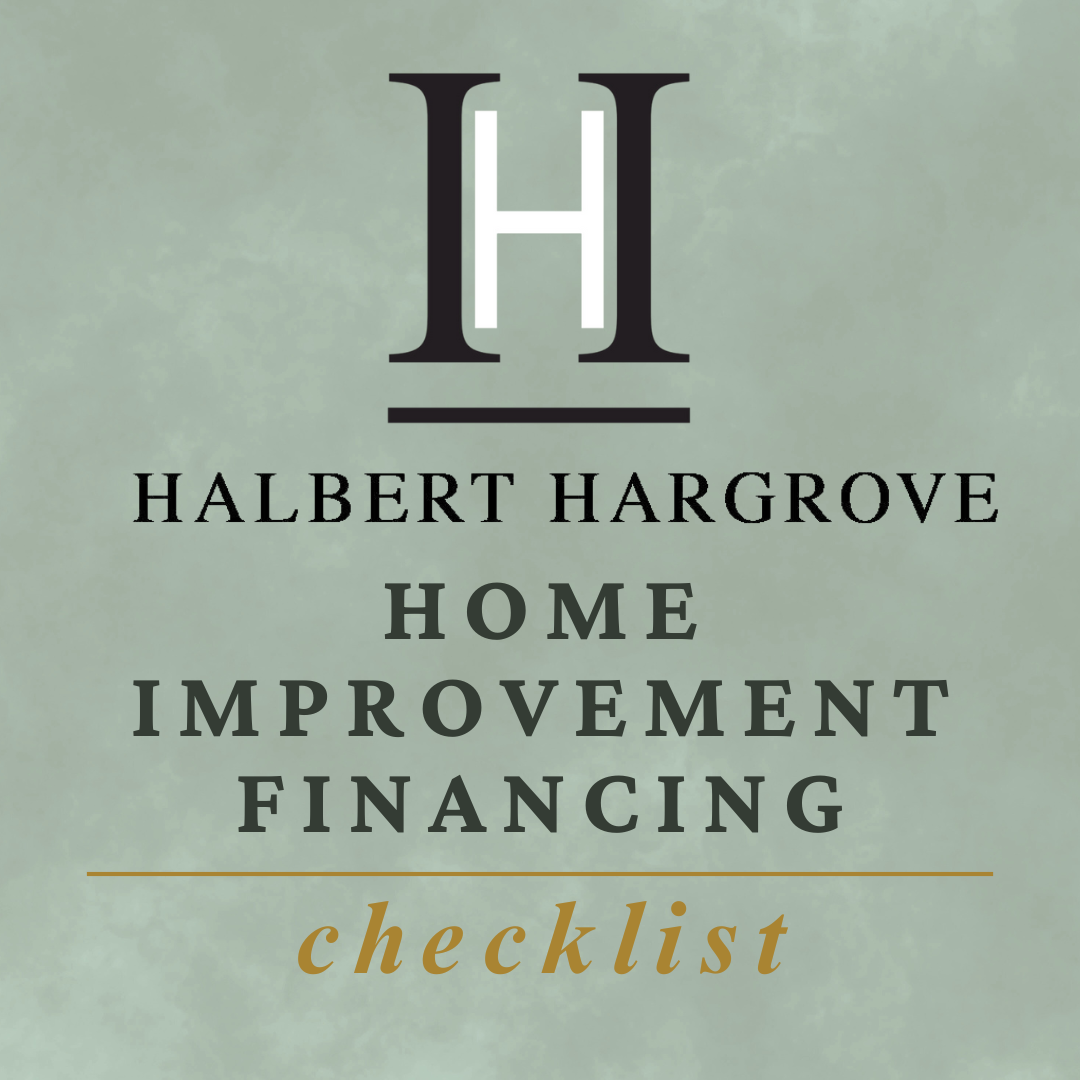By Shane Cummings, CFP®, AIF®, Wealth Advisor & Director of Technology/Cybersecurity
Home improvement projects can breathe new life into your living space, but they often come with a hefty price tag. In 2024, it’s estimated that Americans spent $603 billion on remodeling projects. Whether you’re remodeling a kitchen, upgrading a bathroom, or adding a new room, costs can escalate quickly—especially without a clear financial plan. Many homeowners often dive into renovations with enthusiasm, only to find themselves potentially overwhelmed by unexpected expenses and delays.
Without a structured financing strategy, it may be easy to go over budget or stretch a project out far longer than anticipated. That’s where a financing checklist becomes helpful. It helps you evaluate your options, plan your spending, and avoid financial pitfalls. With the right approach, you can complete your home improvements while being mindful of your financial well-being. Read on for four steps to take before starting your home improvement project.
1. Explore All Available Home Improvement Financing Options
Many homeowners are unaware of the full range of financing options available for home improvement. These include paying with cash, taking out a second mortgage, using a Home Equity Line of Credit (HELOC), or even leveraging a margin loan. Each method has its own pros and cons.
For instance, using cash avoids interest and fees but can deplete your savings. A HELOC offers flexibility and potentially lower rates but uses your home as collateral. Margin loans allow you to stay invested but come with risks like margin calls. A second mortgage spreads costs over time but adds complexity and long-term interest.
It’s important to consider all these options before committing. Compare interest rates, fees, and repayment terms so you choose the most cost-effective and manageable solution for your situation.
2. Planning Helps Prevents Overextending Your Home Improvement Budget
Accurately estimating the total cost of your project is essential. This includes materials, labor, permits, and a contingency for unexpected expenses. Many homeowners underestimate these costs, leading to budget overruns and financial strain.
Without a clear plan, it’s easy to take on more than you can afford. This can result in accumulating debt or having to pause the project midway. Setting realistic financial limits and sticking to them is crucial. You can use simple spreadsheet tools like Google Sheets to track all your project costs – such as building materials and labor – with a running sub-total to see where your budget stands in real time. Having this documented will also be useful down the road if and when a property is sold and capital gains need to be calculated.
Mapping out your expenses and aligning them with your available resources encourages disciplined budgeting so you don’t overextend yourself financially.
3. Keep Your Home Improvement Financing Plan Organized
Managing a home improvement budget involves more than just securing funds. You need to track loan applications, review terms, understand repayment schedules, and monitor spending.
Without an organized approach, it’s easy to miss deadlines, overlook fees, or misunderstand loan conditions. For example, some HELOCs automatically convert to fixed-rate loans after 10 years, which can surprise unprepared borrowers. Setting reminders (or alerts) on key dates can be done on your smartphone or your calendar app of choice. Setting reminders will keep you from having to scramble at the last minute if financing is needed or loan costs are scheduled to increase.
It’s helpful to keep everything in one place, from deadlines, documents, and decisions, so you stay on top of your financing plan and avoid costly oversights.
4. Avoid Costly Mistakes When Improving Your Home
Lack of planning can lead to expensive errors. Choosing the wrong financing method, missing out on tax benefits, or ignoring hidden fees can derail your budget. For example, selling investments to fund a project might trigger capital gains taxes.
Careful planning may reveal that a HELOC is more cost-effective than a margin loan, or that using cash could save you significant interest. Your financial advisor can help evaluate these options, which can lead to significant long-term savings.
Using a checklist can act as a safeguard, prompting you to consider the potential costs and help avoid common pitfalls, encouraging you to evaluate each option thoroughly and make informed decisions.
Explore the Pros and Cons of Home Improvement Financing Options
Start planning your project early to help stay on track and within budget. With a thoughtful approach, you can enhance your home and your financial peace of mind.
The right financing strategy can significantly influence the outcome of your home improvement project. Ready to explore financing options for your home improvement project? Download our checklist to help you weigh the pros and cons of each option. Whether you choose cash, a loan, or a credit line, understanding the implications is key. If you’re curious about how an advisor can help you evaluate your home improvement options, reach out today for a complimentary consultation.
Disclosure:
Halbert Hargrove Global Advisors, LLC (“HH”) is an SEC registered investment adviser with its principal place of business in Long Beach, California. HH may only transact business in those states in which it is registered, notice filed, or qualifies for an exemption or exclusion from registration or notice filing requirements. Registration does not imply a certain level of skill or training. For information pertaining to the registration status of HH, please contact HH or refer to the Investment Adviser Public Disclosure web site (www.adviserinfo.sec.gov). Additional information about HH, including our registration status, fees, and services can be found at www.halberthargrove.com.
This blog is provided for general information purposes only. No portion of the content serves as the receipt of, or as a substitute for, personalized investment advice from HH or any other investment professional of your choosing. It should not be construed as a solicitation to offer personal securities transactions or provide personalized investment advice. Different types of investments involve varying degrees of risk, and it should not be assumed that future performance of any specific investment or investment strategy, or any non-investment related or planning services, discussion or content, will be profitable, be suitable for your portfolio or individual situation, or prove successful. Neither HH’s investment adviser registration status, nor any amount of prior experience or success, should be construed that a certain level of results or satisfaction will be achieved if HH is engaged, or continues to be engaged, to provide investment advisory services. HH is neither a law firm nor accounting firm, nor does it serve as an attorney, accountant, or insurance agent. No portion of its services, or this content, should be construed as legal or accounting advice. HH does not prepare legal documents or tax returns, nor does it sell insurance products. No portion of the content should be construed by a client or prospective client as a guarantee that he/she will experience a certain level of results if HH is engaged, or continues to be engaged, to provide investment advisory services. All opinions or views reflect the judgment of the author as of the publication date and are subject to change without notice. All information presented herein is considered to be accurate at the time of writing, but no warranty of accuracy is given and no liability in respect of any error or omission is accepted.




